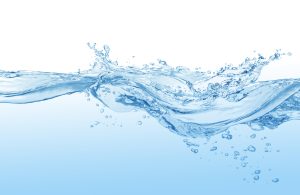Securing the Future of Water Supply with Smart Metering Technology
Water, a most precious resource
Ensuring reliable water supplies is essential to our modern society, from household faucets to farms to mammoth power-generation plants. More than 4 trillion cubic meters of water are withdrawn every year from freshwater resources to sustain residential, industrial and agricultural consumption.
“Since the 1980s, global water consumption has been increasing at an average rate of 1 percent per year and demand is expected to continue to grow at a similar rate for at least another 30 years.”
Berg Insight
Meanwhile, more than 4 billion people currently experience severe water scarcity during at least one month per year. And by 2030, it is estimated, the demand for freshwater could outpace supply by as much as 40 percent. The need for more efficient management of water resources is obvious.
How to make water resource consumption less wasteful (or) more efficient?
The very nature of water as a natural resource makes it unsuitable to be transported economically over long distances while at the same time retaining its quality. Production, distribution and consumption must thus be organized as a regional grid.
Berg Insight explains in its report1 that smart metering technology can convey real-time water consumption information to end-consumers through web portals, smartphones or in-home displays, to raise their awareness of usage and associated costs – and thus make their water-use habits more efficient.
Why improve water metering operations?
More broadly, water utilities have to cope with serious distribution losses (approximately 25%) and non-revenue water (NRW) because of non-functioning meters, inaccurate readings, theft or unbilled consumption. These problems pose major threats to the financial viability and stable supply of water-provision services, along with environmental impact resulting from poor water cycle management.
Automated meter reading (AMR) and advanced metering infrastructure (AMI) that leverage smart meters can significantly reduce NRW losses and strengthen water conservation schemes.
How to select the right communication technology?
Communication between meters and a centralized data-collection system is one of the most critical parts of a smart water metering solution. As water meters are typically installed in remote locations for long periods of time and often require batteries or solar power, the selection of robust, low-energy communications technology is critical.
While standards-based RF technologies and cellular communications have led the pack for water AMI deployments, LoRaWAN and cellular-based NB-IoT and LTE-M have grown particularly fast, largely due to both their low power consumption and customizable deployment options. LoRaWAN technology’s future continues to look bright, as it has become one of the most-deployed technologies for smart water metering in Europe.
“The installed base of LoRaWAN-connected meters will increase at a compound annual growth rate (CAGR) of 30–35 percent until 2027 in both regions.”
Berg Insight
What will you find in this report?
Regional water services, water distribution system operators (DSOs) and water-systems equipment vendors will find in this new Berg Insight report timely and key insights on:
-
- Mega trends shaping water consumption,
- A 2021-2027 forecast of smart water meters’ installed base,
- AMI / AMR solutions to fix distribution losses and reduce NRW, and
- LoRaWAN’s accelerator role for the deployment of smart meters.
1 Berg Insight, “Securing the Future of Water Supply with Smart Metering Technology”, By Fredrik Stålbrand, April 2023

Berg Insight Disclaimer:
Berg Insight is an independent producer of market analysis, and this Berg Insight product is the result of objective research by Berg Insight staff at the time of data collection. The opinions of Berg Insight and its analysts on any subject are continuously revised based on the most current data available. The information contained herein has been obtained from sources believed to be reliable. Berg Insight disclaims all warranties, express or implied, with respect to this research, including any warranties of merchantability or fitness for a particular purpose.
Berg Insight is a trademark of Berg Insight AB and is used herein with permission. All rights reserved.



